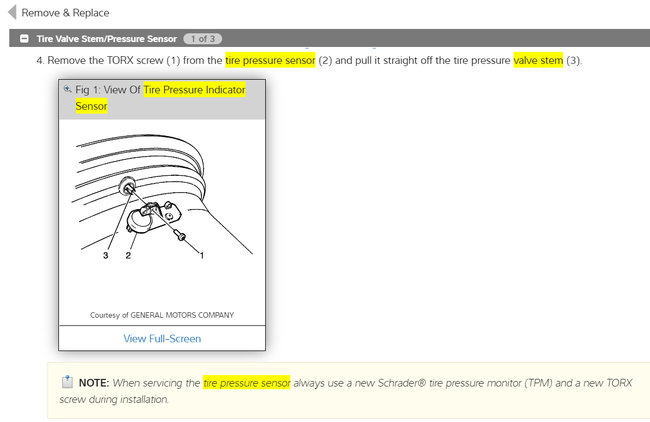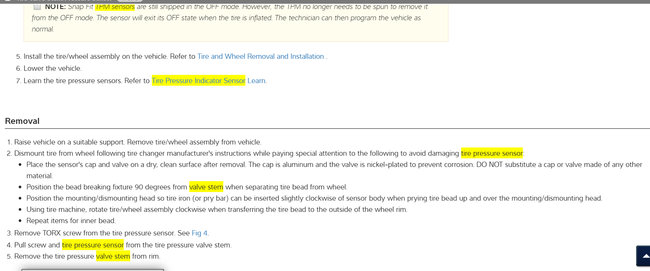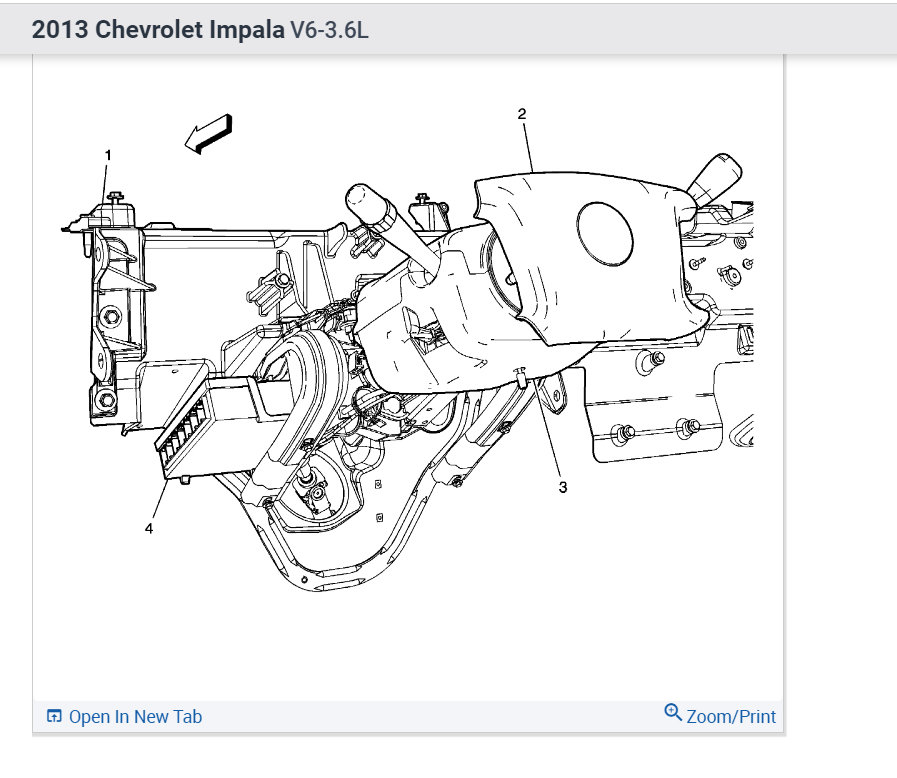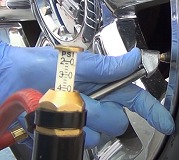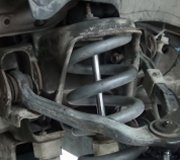I would replace the RF sensor anyway because the computer says its bad, if this doesn't work then the BCM is bad which runs the tire pressure monitoring system. Once the sensor is replaced this is how to reset the tire pressure monitoring system.
Tire Pressure Indicator Sensor Learn
Special Tools
* EL-46079 - Tire Pressure Monitor Diagnostic Tool
or
* EL-50448 - Tire Pressure Monitor Sensor Activation Tool
For equivalent regional tools, refer to Special Tools See: Tire Monitoring System > Electrical / Mechanical Repair > Tire Pressure Monitoring.
Learn Mode Description
The tire pressure monitor (TPM) system uses the instrument panel cluster (IPC), body control module (BCM), remote control door lock receiver (RCDLR), keyless entry transmitter, 4 radio frequency transmitting pressure sensors, and the serial data circuit to perform the TPM learn mode functions. The sensor learn procedure must be performed after every tire rotation, RCDLR replacement, or sensor replacement. Once the learn mode has been enabled, each of the sensors unique identification codes can be learned into the RCDLR memory. When a sensor ID has been learned, the RCDLR sends a serial data message to the BCM to sound a horn chirp. This verifies the sensor has transmitted its ID and the RCDLR has received and learned it. The RCDLR must learn the sensor IDs in the proper sequence to determine correct sensor location. The first learned ID is assigned to the left front location, the second to right front, the third to right rear and the fourth to left rear. The turn signals will individually illuminate indicating which location is to be learned in the proper sequence.
Sensor Functions Using EL-46079, EL-50448, or Equivalent
Each sensor has an internal low frequency coil. When the TPM special tool is used in activate mode, it produces a low frequency transmission that activates the sensor. The sensor responds to a low frequency activation by transmitting in learn mode. When the RCDLR receives a learn mode transmission while in TPM learn mode, it will assign that sensors ID to the location on the vehicle relative to the order in which it was learned.
Learn Mode Cancellation
The learn mode will cancel if the ignition is cycled to OFF or if more than 2 minutes has elapsed for any sensor that has not been learned. If the learn mode is cancelled before the first sensor is learned, the original sensor IDs will be maintained. If the learn mode is canceled after the first sensor is learned, the following will occur:
* All stored sensor IDs will be invalidated in the RCDLR memory.
* If equipped, the DIC will display dashes instead of tire pressures.
* DTC C0775 will be set.
These conditions will now require the learn procedure to be repeated for the system to function properly.
TPM Learn Procedure
Note: In the event a particular sensor's information is displayed on the special tool upon activation but the horn does not chirp, it may be necessary to rotate the wheel valve stem to a different position due to the sensor signal is being blocked by another component.
TPM Learn Enable Methods
1. Ignition ON, initiate the TPM Learn Mode using one of the following procedures:
* Using a scan tool, initiate the TPM Learn Mode. A double horn chirp will sound indicating the Learn Mode has been enabled. The left front turn signal will also be illuminated.
* On vehicles equipped with keyless entry, simultaneously press the keyless entry transmitters lock and unlock buttons until a double horn chirp sounds indicating the Learn Mode has been enabled. The left front turn signal will also be illuminated.
* On vehicles not equipped with keyless entry, press and release the driver information center (DIC) INFO button until the TIRE LEARN message appears on the DIC display. Press and hold the SET/RESET button until a double horn chirp sounds indicating the Learn Mode has been enabled. The left front turn signal will also be illuminated.
2. Starting with the left front tire, active the sensor by holding the antenna of the TPM special tool aimed upward against the tire sidewall close to the wheel rim at the valve stem location. Press and release the Activate button. Ensure that the transmit indicator on the special tool indicates that the sensor activation signal is being transmitted. Wait for a horn chirp. If the horn does not chirp, repeat the sensor activation sequence with the tool. Once the horn chirp has sounded, the sensor information is learned and the turn signal in the next location to be learned will illuminate.
3. After the horn chirp has sounded and the right front turn signal is illuminated, repeat step 2 for the remaining 3 sensors in the following order:
1. Right front
2. Right rear
3. Left rear
4. When the left rear sensor has been learned and a double horn chirp has sounded, the learn process is complete and the RCDLR exits the learn mode.
Here is how to replace the tire pressure sensors in the images below. Let me know how it goes.
Here is how you can replace the BCM as well which you can get preprogrammed for your car from services if you search google.
Images (Click to make bigger)
Sunday, August 28th, 2022 AT 5:56 PM
